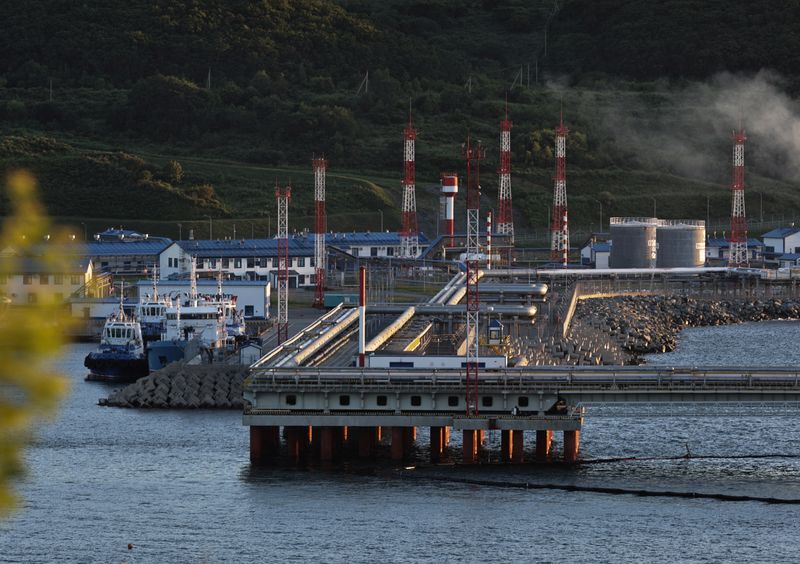Commodities
Oil rises 1% after Fed, BoE keep rates unchanged


© Reuters. A view shows the crude oil terminal Kozmino on the shore of Nakhodka Bay near the port city of Nakhodka, Russia August 12, 2022. REUTERS/Tatiana Meel/Flee/File Photo
By Robert Harvey
London (Reuters) – Oil gained 1% on Thursday to snap a three-day decline as risk appetite returned to financial markets after the U.S. Federal Reserve kept benchmark interest rates on hold.
futures were up 91 cents, or 1.08%, at $85.54 a barrel by 1250 GMT, while U.S. West Texas Intermediate crude futures gained 83 cents, or 1.03%, to $81.27 a barrel.
Oil’s rally tracked gains across financial assets after the Fed kept its benchmark interest rate unchanged at 5.25%-5.50% at its latest meeting on Wednesday.
“Asset markets reacted positively to the Fed yesterday, and I think oil has followed that by moving a bit higher,” said Callum Macpherson, head of commodities at Investec.
U.S. policymakers struggled at a two-day policy meeting this week to determine whether financial conditions may be tight enough already to control inflation, or whether an economy that continues to outperform expectations may need still more restraint.
The Bank of England held interest rates at 15-year highs of 5.25% at its latest meeting on Thursday, the second straight month of steady rates after 14 back-to-back hikes.
But it also stressed that it is not expecting to make rate cuts any time soon.
“Inflation is still too high. We will keep interest rates high enough for long enough to make sure we get inflation all the way back to the 2% target,” Bank of England Governor Andrew Bailey said.
Elsewhere in the U.S., new unemployment claims increased slightly to 217,000 in the week to Oct. 28, according to Labor Department data released on Thursday, but showed few signs of significant slowdown.
“The world’s biggest economy remains resilient. That much was acknowledged by the Fed as they left benchmark rates untouched,” Tamas Varga, analyst at broker PVM, said.
In Europe, a contraction in manufacturing activity in the euro zone deepened in October, with its Purchasing Managers’ Index (PMI) falling by 0.3 points on the month to 43.1. A score of below 50 signals contraction.
Investors will also be watching for developments in the Middle East, which have kept oil markets on edge as a wider conflict could disrupt supplies around the region.
Fighting raged on around Gaza City on Thursday as advancing Israeli tanks and troops encountered fierce resistance from Hamas militants.
Commodities
Oil prices rise; U.S. crude inventories plunge, Russia-Ukraine truce eyed
Commodities
India’s Reliance to stop buying Venezuelan oil over US tariffs, sources say
Commodities
Oil prices climb on Venezuela supply worries

 Forex3 years ago
Forex3 years agoForex Today: the dollar is gaining strength amid gloomy sentiment at the start of the Fed’s week

 Forex3 years ago
Forex3 years agoUnbiased review of Pocket Option broker

 Forex3 years ago
Forex3 years agoDollar to pound sterling exchange rate today: Pound plummeted to its lowest since 1985

 Forex3 years ago
Forex3 years agoHow is the Australian dollar doing today?

 Cryptocurrency3 years ago
Cryptocurrency3 years agoWhat happened in the crypto market – current events today

 World3 years ago
World3 years agoWhy are modern video games an art form?

 Commodities3 years ago
Commodities3 years agoCopper continues to fall in price on expectations of lower demand in China

 Economy3 years ago
Economy3 years agoCrude oil tankers double in price due to EU anti-Russian sanctions























